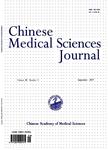Erythropoietin Receptor Positive Circulating Progenitor Cells and Endothelial Progenitor Cells in Patients with Different Stages of Diabetic Retinopathy
Erythropoietin Receptor Positive Circulating Progenitor Cells and Endothelial Progenitor Cells in Patients with Different Stages of Diabetic Retinopathy作者机构:Department of Ophthalmology Peking Union Medical College Hospital Chinese Academy of Medical Sciences & Peking Union Medical College Beijing 100730 China Tongji Eye Institute and Department of Regenerative Medicine Tongji University School of Medicine Shanghai 200092 China Laboratory of Clinical Visual Sciences Institute of Health Sciences Shanghai Institutes for Biological Sciences Chinese Academy of Sciences & Shanghai Jiao Tong University School of Medicine Shanghai 200025 China Department of Ophthalmology Eye and ENT Hospital Fudan University Shanghai 200031 China Department of Ophthalmology Huashan Hospital Affiliated to Fudan University Shanghai 200040 China Department of Ophthalmology Ruijin Hospital Affiliated to Shanghai Jiao Tong University School of Medicine Shanghai 200025 China Department of Ophthalmology Second Affiliated Hospital of Soochow University Suzhou Jiangsu 215004 China Department of Ophthalmology Drexel University College of Medicine Philadelphia PA 19107 USA
出 版 物:《Chinese Medical Sciences Journal》 (中国医学科学杂志(英文版))
年 卷 期:2011年第26卷第2期
页 面:69-76页
核心收录:
学科分类:0710[理学-生物学] 07[理学] 08[工学] 09[农学] 0901[农学-作物学] 0836[工学-生物工程] 090102[农学-作物遗传育种] 071003[理学-生理学]
主 题:circulating progenitor cells endothelial progenitor cells erythropoietin re-ceptor diabetic retinopathy
摘 要:Objective To investigate the possible involvement of erythropoietin (EPO)/erythropoietin receptor (EPOR) system in neovascularization and vascular regeneration in diabetic retinopathy (DR). Methods EPOR positive circulating progenitor cells (CPCs: CD34^+) and endothelial progenitor cells (EPCs: CD34^+KDR^+) were assessed by flow cytometry in type 2 diabetic patients with different stages of DR. The cohort consisted of age- and sex-matched control patients without diabetes (n=7), non-prolif- erative DR (NPDR, n=7), proliferative DR (PDR, n=8), and PDR complicated with diabetic nephropathy (PDR-DN, n=7). Results The numbers of EPOR^+ CPCs and EPOR^+ EPCs were reduced remarkably in NPDR corn pared with the control group (both P(0.01), whereas rebounded in PDR and PDR-DN groups in varying degrees. Similar changes were observed in respect of the proportion of EPOR^+ CPCs in CPCs (NPDR vs. control, P(0.01) and that of EPOR^+ EPCs in EPCs (NPDR vs. control, P〈0.05). Conclusion Exogenous EPO, mediated via the EPO/EPOR system of EPCs, may alleviate the impaired vascular regeneration in NPDR, whereas it might aggravate retinal neovascularization in PDR due to a rebound of EPOR^+ EPCs associated with ischemia.



